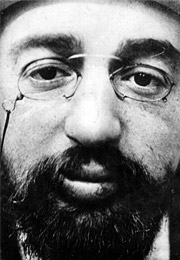Known as much for his flamboyant character as his groundbreaking artwork, Henri de Toulouse-Lautrec (1864–1901) is widely celebrated for paintings, prints, and posters that evoke the dynamic whirl of fin-de-siècle Paris. He developed a distinctive style that used boldly sinuous contours and a sharply hued palette to capture the eccentric characters that frequented Parisian stages, cafés, circuses, and brothels. Toulouse-Lautrec offered a frank depiction of life in the city’s social underbelly, and the graphic innovations that he produced over a short, intense career were extremely influential on following generations of artists. Although he did not affiliate with any particular school, he is often considered one of the major figures of Post-Impressionism.
Toulouse-Lautrec hailed from an aristocratic family in southern France, and from his parents (who were first cousins) inherited a genetic condition that stunted his growth and left him crippled. Surrounded by family members who were amateur artists, Toulouse-Lautrec was encouraged in his artistic pursuits from a young age and found art a welcome distraction, especially while convalescing. Upon moving from Albi to Paris in 1882, he studied in the ateliers of two academic painters—yet he turned toward subjects more in line with the Impressionist painters, focusing on life in the modern city, particularly its margins. Living a bohemian life in Montmartre, he was drawn to subjects such as prostitutes and performers and was perhaps motivated by a sense of identification with the socially marginalized due to his physical deformities. He also became known for his acerbic wit, and at the age of just twenty he created a sensation with his precocious large-scale parody of Puvis de Chavannes’s The Sacred Grove.
A denizen of the Parisian nightlife scene, Toulouse-Lautrec depicted life in the cabarets and theaters he frequented and created influential posters for venues—such as the Moulin Rouge—and their stars. Using new lithographic techniques together with compositional effects derived from Japanese woodblock prints, Toulouse-Lautrec developed indelible icons of Paris as the capital of art and entertainment; these images were at once popular and avant-garde. While his health rapidly deteriorated from 1899 due to a combination of syphilis and alcohol, he created a late body of work that was inspired by a performance of Isidore de Lara’s opera Messaline, which he viewed in Bordeaux. These paintings highlight Toulouse-Lautrec’s attraction to the alternative world of the stage, a realm of artifice and exaggeration.



